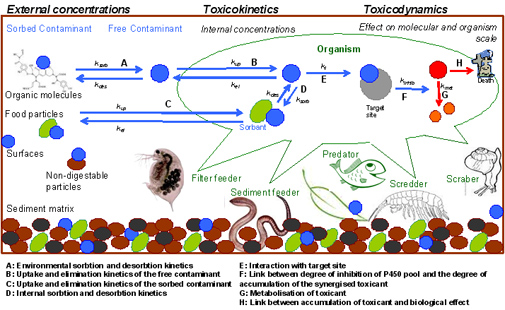Modeling and understanding the joint effect of chemical mixtures
The joint effect of most chemical mixtures can be well predicted by mathematical models. A few, however, deviate from the predictions and yield much larger effects than could be expected from knowing the toxicity of the individual chemicals. These mixtures are called synergistic.
In the research group we work towards an understanding of the mechanisms behind some of these synergistic mixtures. We do this by investigating the toxicokinetics (uptake, metabolisation and excretion overtime) and toxicodynamics (effects over time) of the chemicals alone and in mixtures while measuring activity of suspected target enzymes.
Our research is presently focused on mixtures of azole fungicides and pyrethroid insecticides, which are sprayed out together in agricultural pest management and known to co-occur in the environment. The aim is to be able to predict environmental effects of these mixtures and assess the importance of the synergistic interactions under natural conditions.
The work is financed by the University of Copenhagen and takes place in collaboration with University of Cambridge.
 Behaviour of sorbing contaminants in the environment and effect on organisms with different feeding habits.
Behaviour of sorbing contaminants in the environment and effect on organisms with different feeding habits.Watch Professor Nina Cedergreen in the video: "Chemical Cocktails"
Contact
- Michele Gottardi
- Rikke Poulsen
- Litang Qin
